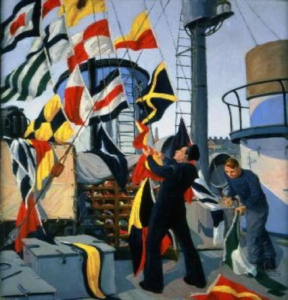FLAG
Flag Etiquette – The right way!

With the modern systems of communication the classic use of flags has faded into the past. Nevertheless their use remains obligatory and is always regulated.
It is important for all to distinguish the various types of flags: the National flag – the Owner’s flag – the Courtesy flag – the Club flag or Company flag – the International signals and the flags used for a ship dressed overall.
Some rules to preserve this spirit of yachting
– A flag is hoisted and lowered. It is hoisted at 08.00hrs and is lowered at sunset.
– A flag is always hoisted to the top.
– Apart from the International Signals 2 flags should never be hoisted on the same halyard; it is insulting for the flag positioned in the lower part.
– Naval etiquette would like that the flag (except the National flag) is hoisted furled, to be deployable only once hoisted.
– If one passes a warship it is agreed to greet it by lowering ones National flag to ¾ of the hoist. Normally the warship should respond by lowering its National flag to half halyard.
The National flag
It is the largest of the flag’s hoisted. It is positioned at the stern on the starboard side on an inclined flagstaff or on the backstay.
Its dimension must remain in proportion to the size of the boat. A flag that is too large that bathes in the water is regarded as insulting (“the rule ” – to touch the water by 2 fingers).
A maximum size of luff (the largest dimension of the flag, in opposition to guiding equal to the 2/3 of the leech) should be about 1/10 the length of the boat (1.2m for a boat of 12m)
The Owner’s flag
One hoists this rectangular flag with the colours of the nationality of the owner (when it is different from that of the boat) under the port spreader or in place of the club flag. This flag should be hoisted only in the presence of the owner on board.
The Courtesy flag
It is the flag of the country approached and is smaller than the National flag. It is hoisted under the starboard spreader when one is in territorial waters or at ports where the formalities of entry are carried out.
On arrival to a new nation one hoists the Q flag (the “yellow jack”) as a signal of a ship free of disease that requests boarding and inspection.
The Club flag or Company flag (Burgee)
It sits at the head of the mast and is the sign of a club. It is allowed to remain there.
Dressed Overall
Made up of 40 flags flown from the bow to the stern that pass through the mastheads. They hoist in this order:
Bow to the top of the mast: E, Q, 3, G, 8, Z, 4, W, 6, P, 1, I (intelligence), T, Y, B, X, 1st substitute, H, 3rd substitute.
Top of the mast to the stern: D, F, 2nd substitute, U, A, O, M, R, 2, J, 0, N, 9, K, 7, V, 5, L, C, S.
